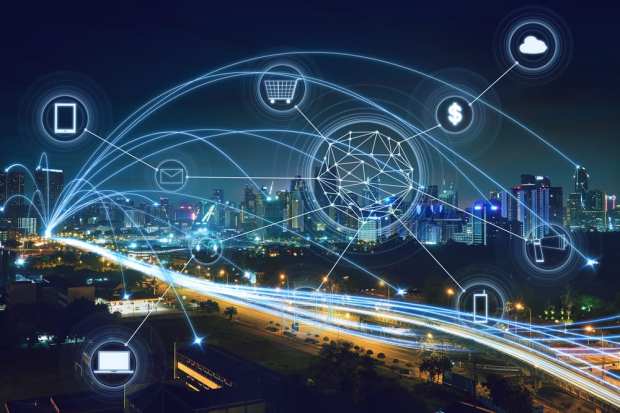Digital-First Banking Has Connections

You’ve got to hand it to the internet. A pandemic breaks out, everyone’s ordered to work at home or just plain stay at home — where we shop online, live on connected devices, soak up barrels of bandwidth, heat up server farms, strain broadband and Wi-Fi — but all the connections held. Digital infrastructure worked, despite massive unforeseen spikes.
This near-ubiquitous tech has proven to be what many already call it: a public utility, loosely akin to gas and electric. We’ll rely on it now more than ever. And the real world of goods and services trade facilitated by digital-first transactions has kept working too, for the most part.
But sometimes, digital money still needs to meet the people it belongs to inside physical bank branches. They’ve been temporarily shuttered by the health crisis of a lifetime. The April 2020 PYMNTS Digital-First Banking Tracker® done in collaboration with NCR Corporation, is a snapshot of a tragic time where technology is keeping money flowing and helping solve problems.
Where Real-Time Meets the Road
With cash flow now the only chance for millions of Main Street small and medium-sized businesses (SMBs) and quite a few enterprise-level firms, the Small Business Administration’s (SBA) loan programs weren’t built to quickly scale or even react to economic emergencies particularly well. That became clear as disbursement of Paycheck Protection Program (PPP) funds and SBA emergency loans was widely panned by government watchdogs. There’s outcry to radically accelerate real-time money.
Fortunately for its growing base, digital-first banking is where real-time meets the road.
Financial institutions (FIs) “are thus employing a range of technological solutions to bring these in-branch services to customers without needing physical branch visits,” the report states. “Many are accomplishing this with advanced interactive teller machines (ITMs), which connect customers to tellers in remote locations via the internet so they can perform face-to-face interactions without actually meeting in-person.”
The report notes, “These machines have already seen success at drive-thrus at Consumers Credit Union and Comerica Bank, giving customers the services they need from the safety of their cars. ITMs are just one example of the technology that could help banks and their customers ride out the COVID-19 storm — and may even benefit the financial industry once this crisis is in the past.”
Responsibility, Not Just Opportunity
ATMs are the original self-serve option (after snack machines), and their convenience and familiarity will serve well in the months and years to come. Few people looking at the major trendlines as COVID-19 clears believe things are going back to anything like the normal we once knew. Touchless, contactless, remote, social distancing, online, digital — these are innovations for a pandemic-weary world.
“As people adjust to the new normal, financial institutions are leveraging digital technologies to strengthen relationships, offering simple self-service banking options for remote access,” NCR Digital Banking Senior Vice President and General Manager Doug Brown told PYMNTS.
“Some banks and credit unions are highlighting the benefits of contactless voice banking for quick account updates or revised branch hours. For more complex topics or transactions, they’re taking advantage of live chat or video, humanizing digital engagement,” he said.
Pointing to digital banking notifications, mobile banking reminders and location services for on-site help completing digital-first transactions on occasion, Brown added that banks and FIs have a responsibility here, not just an opportunity. “Financial institutions should also maximize their websites and social channels to stay connected, sharing ways they’re offering support with waived fees, delayed payment options or funding assistance for small businesses,” he said.
